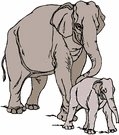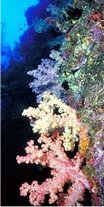
Worksheets and No Prep Teaching Resources
Reading Comprehension Worksheets
Animal Themes
Oceans

Animal Themes
 Worksheets and No Prep Teaching Resources Reading Comprehension Worksheets Animal Themes Oceans |
 Animal Themes |
| edHelper's suggested reading level: | grades 6 to 8 | |
| Flesch-Kincaid grade level: | 8.02 |
| Print Coral Reefs (font options, pick words for additional puzzles, and more) |
| Quickly print reading comprehension |
| Print a proofreading activity |
| Coral Reefs |

|
 1 Coral reefs are home to more than 25% of all marine life. Yet they only cover a very small fraction of the ocean floor � less than 0.2%, to be exact! The degree of biodiversity we see in coral reefs is not unique. On land, at least 50% of all the plant and animal species can be found in an ecosystem that represents merely about 7% of Earth's surface area. That ecosystem is called a rainforest. It's no wonder that we often call coral reefs "rainforests of the sea."
1 Coral reefs are home to more than 25% of all marine life. Yet they only cover a very small fraction of the ocean floor � less than 0.2%, to be exact! The degree of biodiversity we see in coral reefs is not unique. On land, at least 50% of all the plant and animal species can be found in an ecosystem that represents merely about 7% of Earth's surface area. That ecosystem is called a rainforest. It's no wonder that we often call coral reefs "rainforests of the sea." |
Create Weekly Reading Books
Prepare for an entire week at once! |
| Leave your feedback on Coral Reefs (use this link if you found an error in the story) |
 |
Animal Themes
|
 |
Oceans
|
|
|